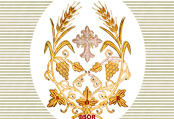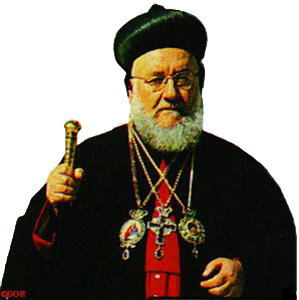
 |
|
||
| History of The Recording by HH Patriarch Ya`qub III |
|
|
We are fortunate to possess the recordings of the Beth Gazo in the voice of Patriarch Jacob III who is considered to be one of the masters (if not the master) of Syriac music in this century. Patriarch Jacob was the perfect choice for this task for not a few reasons: Firstly, his sharp memory gave him the ability to memorize over 700 hundreds melodies, some with variants (shuhlophe). Secondly, he had a voice of a "nightingale" as Patriarch Zakka I tells us. Thirdly, he learned the Beth Gazo from another master of Syriac music (see below). Fourthly, he was familiar with his native school of music in Iraq (the School of Takrit) as well as the more popular School of Mardin (look under Schools of Music). Patriarch Jacob learned the Beth Gazo while he was assigned to serve in Malankara (India) under Mor Yulios Elias Qoro, then Patriarchal Delegate in India. Archbishop Mor Yulios was a graduate of the Mardin school of music and an authority on the Beth Gazo. During a five-month visit to the United States (from March 11 - August 15, 1960), Patriarch Jacob III, at the request of Metropolitan Mor Athanasius Yeshu Samuel, the late archbishop of the United States and Canada, recorded the Beth Gazo according to the School of Mardin on four or five reel-to-reel audio tapes. The recording was performed at the house of the Archbishop in Hackensack, NJ, commencing on the morning of Saturday, July 23, 1960, as we are told in the prologue on the tapes. Deacon Eli Shabo narrates that Patriarch Jacob used to record for four or five hours every day during the hot and humid summer days of July, without any air conditioning in the house, to which archbishop Samuel would often complain, "Sayyidna, my Lord, enough for today! You can continue tomorrow." The Patriarch would reply, "I want to finish it all." Patriarch Jacob wanted to consult another Beth Gazo master. Archbishop Samuel suggested the name of Cor Episcopos Abd el-Nur Samuel (no relation between the two clerics). Shabo narrates the following anecdote which he overhead during a visit to the Archbishopric house. Patriarch Jacob was narrating his discussion with the Cor Episcopos: "when we were going over the Beth Gazo, we came across this qolo [Shabo cannot remember the name]. 'This qolo is lost,' I said. The Cor Episcopos replied, 'No Sayyidna, I know this one.' " The tapes remained in the Archbishopric House unused for a while. The first person to make use of them, according to Shabo, was Deacon Elias Darrakjy who made a personal copy. The existence of the recording remained not widely known until Shabo expressed to the Archbishop his desire to learn the Beth Gazo. Archbishop Samuel told Shabo that he has the recordings from Patriarch Jacob which Shabo should use. In around 1974, Shabo took the original recordings to a recording shop in Paterson and made four or five copies on five 90-minute tapes. From these, he made few other copies which he presented to individuals who requested them. Shabo's originals were damaged after extensive use. Independently, Joseph Tarzi who then lived in Canada (now Very Rev. Fr. Tarzi of St. Ephrem's church in Los Angeles) heard of the recording. Having a passionate love for church music, and himself a master of the Beth Gazo according to the School of Edessa, he drove to NJ and asked the archbishop if he could make a copy. The originals were still with Shabo. Tarzi took the originals from Shabo and made his own copy on eight 60-minute cassette tapes. He made some copies and distributed them from Canada. In 1985, the recording was published on five 90-minute cassette tapes by St. Ephrem Monastery in Holland. These must have been copied from other duplicates made either from Shabo's or from Tarzi's copies. It is possible that the published recordings are were made from tapes which are few generation copies from the originals, for the quality is by far less clear that the recordings of Tarzi. In April 1997, Syriac Orthodox Resources in collaboration with The Syriac Computing Institute decided to digitize the Beth Gazo and make it available electronically over the Internet. George Kiraz made use of a set of tapes which he copied in 1987 from Tarzi's original cassettes. Kiraz digitized and segmented the Beth Gazo into .wav files, and made a compressed version in Real Audio .ra format. |

|
| Copyright © Syriac Orthodox Resources. All Rights Reserved. |
| Last Update: December 18, 2001 |